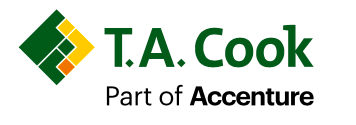A large petrochemical complex in the Gulf Coast region of the U.S. sought to improve profitability by reducing fixed maintenance costs. The operation was targeting a 20% reduction in its maintenance-labor costs and engaged T.A. Cook to evaluate the improvement potential and implement corrective actions.

APPROACH
T.A. Cook conducted an extensive maintenance-effectiveness and -efficiency analysis to assess and document current state and identify improvement potential. Due to the site’s large size, the analysis was conducted over the course of four weeks. It included assessments of CMMS and budget data, workshops and interviews with over 80 individuals, process mapping, and 40 day-long studies to quantify hands-on-tool-time productivity and active supervision percentages.
The analysis concluded that maintenance productivity was being hampered by a number of different obstacles, and as a result was just 36%. And while the site had a solid corporate maintenance-work-management process, it was not fully implemented in the field. Other deficiencies were identified as well, including significantly inflated planning-hour estimates, assigned jobs lacking work packages, a lack of proper scheduling, and misaligned roles and responsibilities that did not support the overarching work-management process. Additionally, Front Line Supervisors lacked the tools, behaviors and availability to proactively identify and remove productivity obstacles in the field.
By quantifying the impact of key improvement levers the assessment team identified that the site had the potential to achieve productivity of up to 65%. Recommendations included sequenced enhancements to the maintenance work order management process, planning and scheduling improvements, and training and coaching for Front Line Supervisors.
To meet site requirements, the corporate work-management process was modified, resulting in optimized local procedures that were fully implemented and now effective. Roles and responsibilities were realigned to the newly optimized work- management process, and personnel received training on their new functions.
The site also conducted training on how to write clear work notifications and implemented improved planning processes that resulted in more comprehensive work plans. Delay tracking and a planner feedback mechanism were also implemented, addressing planned-hour estimates and job-package content. To cement these changes, T.A. Cook conducted training and three months of field coaching that focused on active supervision behaviors, which included getting supervisors into the field more frequently to identify and remove productivity barriers. The site then undertook additional initiatives to further improve productivity on their own by improving transportation and bundling jobs in a single area which maximized hands on tool time and reduced travel and permitting time.
ACHIEVEMENTS
T.A. Cook conducted an audit to quantify the results eight months after the start of the improvement program. The audit found that productivity had improved to 62%. Impactable maintenance delays dropped by 70%. Improved scheduling and added transportation reduced travel time by 39%. And planning accuracy improved by 75%. Overall, the site realized a 72% improvement in maintenance productivity in just eight months. This improvement represented nearly double the targeted 20% reduction in maintenance labor costs. The remainder of the savings potential was dedicated to conducting more focused reliability work to improve mechanical availability.♦♦♦




